Sony has been making waves with the a7R III and a9, but a lot of photographers don't need those crazy levels of resolution and frame rates. Instead, they look for a quality camera that can do almost anything asked of it at a reasonable price. The Sony a7 III may just be that camera, with an awesome feature set, excellent performance, and an aggressively competitive price. Check out our full review.
Key Specifications
- 24-megapixel backside-illuminated sensor
- 693 phase detection AF points with 93 percent frame coverage
- ISO range: 100-51,200 (expandable to 50-204,800)
- UHD 4K 30p with HLG and S-Log3 Gammas (6K oversampling at 24p and 5K oversampling with 1.2x crop at 30p)
- 2.36-million dot OLED EVF
- 3-inch, 922,000-dot tilting touchscreen
- 5-Axis SteadyShot Stabilization
- Continuous rate: 10 fps
- Buffer: 89 raw, 177 JPEG
- Dynamic range: 15 stops
- Built-In Wi-Fi and Bluetooth
- Anti-flicker mode
- Dual SD slots
- USB 3.0 Type-C port
- Magnesium alloy chassis with weather-sealing
- Battery life: 710 shots
Design and Handling
If you've used previous generations of the a7 series, you'll appreciate the ergonomic and control improvements on the a7 III. My first foray into the series was the a7R II, and the difference in the third generation (both the a7R III and a7 III) is noticeable. When asked to sum it up, I told a friend that the third generation feels like an intuitive photographer's camera as opposed to a computer housing a great sensor. The a7 III is still a small camera by full frame standards, but Sony's efforts to refine the design pay off here.
I'm 6'2" and have long fingers, so the mirrorless cameras of yesteryear have always been a bit rough for me to use. Sony increased the size of the grip on the a7 III, and that makes it far more comfortable to hold and shoot with. The second benefit is that because my hand now conforms naturally to the camera, I can use muscle memory to find controls without removing my eye from the viewfinder, which makes me far quicker when I'm shooting. It also makes for more stabilized shots, as the camera sits deeper in the palm of my hand instead of being gripped by my fingertips. Dials are bigger as well, which helps to map out the geography of the camera in your muscle memory. Altogether, the ergonomics and controls are a definite step forward and should make most any photographer happy. The only complaint I have is that the AF-ON button is a smidgen small and too close to the viewfinder for my taste. Because I (and many other photographers) use that for back-button autofocus, I need to be able to find it and press it quickly with my eye to the viewfinder, and jogging my thumb over the AF joystick and below the dial makes it a bit difficult not to accidentally activate another function or poke my own face. It's not a huge issue once you get used to it, but I'd prefer the button to be a bit bigger and more closer to the outside of the camera.
The four custom function buttons are always a welcome addition as well, particularly C1 and C2, which sit in an ideal position directly behind the shutter button. Having all the customization options for the controls is great, as though Sony's menu system is still a bit confusing, once you get used to it, it offers a high degree of flexibility, and you can really set the camera up to give you maximal access to your specific needs. For example, I frequently shoot events that require me to be ultra-quiet, and I use my C3 button to toggle the silent shutter on and off. Furthermore, it's not just the custom function buttons that can be customized; almost any button on the camera can have its functionality changed. If you take the time to set up the camera to your liking, it can become incredibly intuitive in your hands and keep you out of the menu and your eye to viewfinder more often. The AF joystick is responsive and works well to help you navigate through all those AF points. One small complaint is that the AF point (particularly in spot mode) is a bit difficult to see, and as it zips around the screen, it can be easy to lose. I'd prefer a more contrasty point, but that's something that can be addressed in a firmware upgrade.
At 2.36 million dots, the viewfinder is a lower resolution version than that found in the a7R III and a9 (3.68 million). And though I noticed a difference compared to my a7R III, the viewfinder isn't bad. It's plenty bright enough, and the resolution difference never had an appreciable practical consequence when shooting: I could still frame and track just as accurately, which is what I really care about. More importantly, it refreshes quite quickly; I had no problem following a darting bird through the 200mm end of a zoom lens, which should make those photographing action quite happy.
The a7 III comes with dual card slots, which allows for the degree of redundancy professionals need. Note that only one slot supports faster UHS-II cards, however in practice, the deep buffer never made me run into any issues when recording to both slots. The larger grip also allows for a bigger battery — much more in fact. Sony claims a 2.2x capacity increase, which brings the a7 III into line with midrange DSLRs.
Autofocus
As mentioned, the a7 III sports 693 phase detection autofocus points that cover a whopping 93 percent of the frame. To say this is compositionally freeing is an understatement. The system is quite powerful on paper and with that 10 fps continuous rate, one would hope it can keep up. The good news is that in practice, it comes through.
AF-S
In single mode, focusing is quick and accurate. Like other Sony cameras, the a7 offers an array of focusing areas: wide, zone, center, flexible spot, expand flexible spot, and lock-on AF (for tracking in continuous mode). I typically use flexible spot or expand flexible spot and have had no issues with the camera nailing focus precisely and accurately. In low-light conditions, where mirrorless cameras have traditionally struggled in the past, the a7 was a champ, consistently focusing accurately and with rather impressive speed given the lack of illumination. The AF joystick works well and makes it easy to select one of the hundreds of AF points.
Eye AF
The latest iteration of Eye AF is impressively good. For still or almost-still subjects, you should have no issues with locking on to the subject's nearest eye, which makes shooting at wide apertures a breeze. With the high customizability of the camera, I simply mapped Eye AF to the AEL button, which I don't use. Now, I can slide my thumb over from the AF-ON button and instantly activate it, a tremendous benefit if, for example, you're shooting a wedding reception and want to capture a quick portrait. Moreover, it works quite well in continuous AF as well. Whereas my hit rate was near 100 percent in the tracking below, it was about 90 percent when I repeated the test with Eye AF, which is remarkable considering the small target and movement. Furthermore, the camera smartly switched back to tracking the face if it lost the eyes.AF-C and Tracking
Manual Focus
The a7 III carries with it the rest of the a7 line's strong manual focus aids, which make it very easy to get a shot if you're using adapted legacy glass or need to manually focus for whatever reason. While the Eye AF is very good, I also love using the zoom aid, which I have set to zoom in wherever the AF point is located the moment I switch to manual focus and grab the focus ring. This makes it exceedingly easy to make sure the eyes are tack-sharp in a portrait. Focus peaking also works quite well, making it rather simple to see what areas are in focus. Depending on what you're shooting, you might prefer one over the other; I generally like the zoom aid as I'm concerned about the same area every time with portraits (the eyes), while landscape shooters and videographers might prefer peaking. I also shoot classical music concerts with an adapted Canon 400mm f/2.8 lens, and its autofocus motor is loud enough to bother patrons, so I'll switch on focus peaking or the zoom aid, and in tandem with the silent shutter, my shooting in undetectable. Whichever aid you choose, you should be pleased by the experience.Burst and Buffer
Sony rates the a7 III at a 10 fps burst rate, which matches what I saw in practice. Of course, a fast burst speed and deep buffer means a higher probability of capturing peak action or the exact moment you want.
For example, in the above shot, I wanted to capture the water as it splashed over the center of the rock outcropping. The waves were a bit unpredictable that day, so I prefocused and started firing off bursts, and sure enough, I got the shot I wanted. Having that frame rate also helped me capture this bird with its wings in a photogenic position. This is also where the buffer really stepped up. At 89 raw files, you can shoot for almost 9 seconds before filling it, which is more than enough to cover pretty much any action: sports, birds, or otherwise. Sports and wedding photographers, photojournalists, and more should enjoy the deep buffer. One thing to note is that because only one card slot is UHS-II, if you set the camera to record to both cards, the buffer will clear more slowly. In practice, I didn't run into this issue because the buffer was deep enough to keep up with what I was shooting, but if you're shooting extreme amounts of action, it's something be aware of.Image Quality
24 megapixels is near the sweet spot of full frame cameras in terms of balancing resolution and noise performance, and the a7 III handles the balance well. Overall, images are sharp with excellent dynamic range and noise performance, while Sony's color science continues to improve.
Color
Color is noticeably better than the second generation a7 series cameras. Skin tones in particular look far better, rendering much more organically and taking much less work in post. People tend to look more full of life with smoother and more pleasing tones. Portraitists should be quite happy with the files that come out of the camera.
In general, colors are vivid and saturated, with pleasing, smooth transitions and a lot of flexibility in post. The should make shooters of any genre happy.Dynamic Range and File Latitude
Dynamic range remains one of the best aspects of the a7 series, and the a7 III continues to impress. For landscape shooters, this means less bracketing to keep the sky and earth in check. For portraitists, it means being able to underexpose to protect the highlights and bring the subject back up without perceptible penalty. For me, the real joy of this is the latitude one gains in post-processing. I can push files much further in the spirit of experimentation or in extreme cases of protecting the highlights (such as a glass wall behind a stage on a sunny day), and the files still look great.
High ISO
High ISO performance is top notch. Files look excellent up to ISO 3,200, with 6,400 and 12,800 certainly being serviceable. At ISO 25,600 and 51,200, you'll notice fairly prominent grain, but sharpness and decent dynamic range remain, especially if you expose correctly (shooting with an EVF helps this). ISO 102,400 and 204,800 should be reserved for emergencies, but the situations in which you'll need those are few and far between, if ever. More importantly, at the ISOs the vast majority of photographers use, the a7 III puts out great images. (Note: the caption of each image in the above gallery shows the EXIF data, including ISO.)
Other Features
Stabilization
Simply put, Sony's in-camera stabilization is good — really good. It's even better when combined with a lens with OSS (optical steady shot). I really hate getting out a tripod unless I plan on shooting lots of shots with it over a longer period of time, so the ability to handheld whenever possible is great for me. Such a situation happened above as I was walking around at night and noticed the windmill framed beautifully by the buildings. I knew I wanted some motion, so I decided to see how far I could push the stabilization. The above shot was at 105mm and a shutter speed of 0.5 s. Following the standard rule, that's a stabilization benefit of 5.7 stops — absolutely ludicrous. Of course, not all lenses have their own stabilization, but the great thing about in-camera stabilization is that it works with any lens. Even if you're adapting 40-year-old glass, you get the benefits.Silent Shutter
The silent shutter is one of my favorite parts of the camera. Before I started shooting mirrorless, when I shot classical music concerts, I had to use my knowledge of the piece and timing to shoot during loud portions. Unfortunately, this meant I missed a lot of interesting moments, and if it was something like a solo harp piece, I was really up the creek without a paddle.

1/160 s, 400mm, f/2.8, ISO 320
Weather-Sealing
In the a7 III's manual, Sony says: "This camera is designed to be dust and moisture-resistant, but is not waterproof or dust-proof." In all reasonable shooting situations, I didn't have a problem. The worst I experienced came just after I shot the above image, when an unexpected wave smashed the rocks to my right and drenched me in 44-degree lake water. Despite my idiocy, the camera kept shooting without a hitch. I would feel more than comfortable shooting with it in light rain or any of the standard conditions a landscape or wedding photographer might encounter.Battery Life
The a7 III is rated for 710 shots, and in practice, I exceeded that easily. For reference, the 5D Mark IV is rated for 900 shots and the Nikon D750 is rated for 1,230, while the a7 II was rated for 350 shots. In other words, Sony has taken a huge step forward with the latest model and brought it into the same general realm as other professional bread-and-butter cameras. In general, the battery lasts long enough that you won't have the mirrorless anxiety of the past. Wedding photographers in particular should be happy to know they'll have to swap out batteries less often and worry less about missing shots.
Video
The a7 III video feature set is just as impressive as its still set:
- Full frame 4K/24p oversampled from 6K
- 4K/30p oversampled from 5K at 1.2x crop
- 1080/120p
- HLG and S-Log3 Gammas
Simply put, the 4K/24p is beautiful: it's crisp and gives truly impressive detail, and the Log profiles combined with the great sensor allow plenty of file latitude in post. The 6K oversampling makes for gorgeous footage full of vivid detail, and with the lack of a crop in 24p, you can easily get those ultra-wide shots. If you use 4K/30p, you can expect a slight loss of quality (plus the 1.2x crop factor), but the footage still looks excellent. You also get the normal array of Sony assistants, namely focus peaking and exposure warnings.
1080p video looks great as well (my thank to Pat Black Visuals for providing this extra footage).
Though the camera has excellent manual focus aids, if you prefer autofocus in video, Sony provides several options, including Center Lock-on AF, Spot AF, and Wide AF (which seeks out faces), as well as touch focus. You can also adjust things like AF drive speed and tracking sensitivity for more cinematic focus racks and better tracking depending on the situation.
Of course, the in-body stabilization is massively useful for video shooters as well and allows you to get steadier handheld footage. Vloggers may have a bit of trouble since the LCD screen isn't fully articulating. You can use the PlayMemories Mobile app on your smartphone as a viewfinder, those this means both your hands will be tied up if you hold the camera in your other hand. This functionality can be very useful, however, if you want to place the camera somewhere before an event, for example, and control it from far away.
What I Liked
- Ergonomic and control improvements
- Highly customizable interface
- Responsive viewfinder
- Very good battery life
- Powerful and accurate autofocus system with excellent tracking
- Helpful manual focus aids
- Fast burst rate with deep buffer
- Improved color, particularly skin tones
- Excellent dynamic range and file latitude
- Strong high-ISO performance
- Superb in-body stabilization
- Good weather-sealing
- Great quality video
- Price
What I Didn't Like
- Only one card slot is UHS-II
- LCD screen does not fully articulate
- AF-On button placement and size
- AF point can be hard to see
- Menu system is still confusing
Conclusion and Purchase
While there's always room for improvement, it's hard to find serious faults with the camera Sony has made at the price point it sits at. Simply put, the Sony a7 III is the best all-around camera out there, and it's priced at a truly impressive point. With its great sensor, excellent autofocus performance, high frame rate, excellent low-light performance, good battery life, and high-quality video output, there are few situations or genres it can't tackle with ease. While the crazy frame rate of the a9 and the high resolution of the a7R III are often the talk around photography circles, the a7 III quietly checks almost every box 95 percent of photographers and videographers need checked at a price far below those of its bigger siblings, and for that, it's a no-brainer to recommend it wholeheartedly. You can purchase yours here.

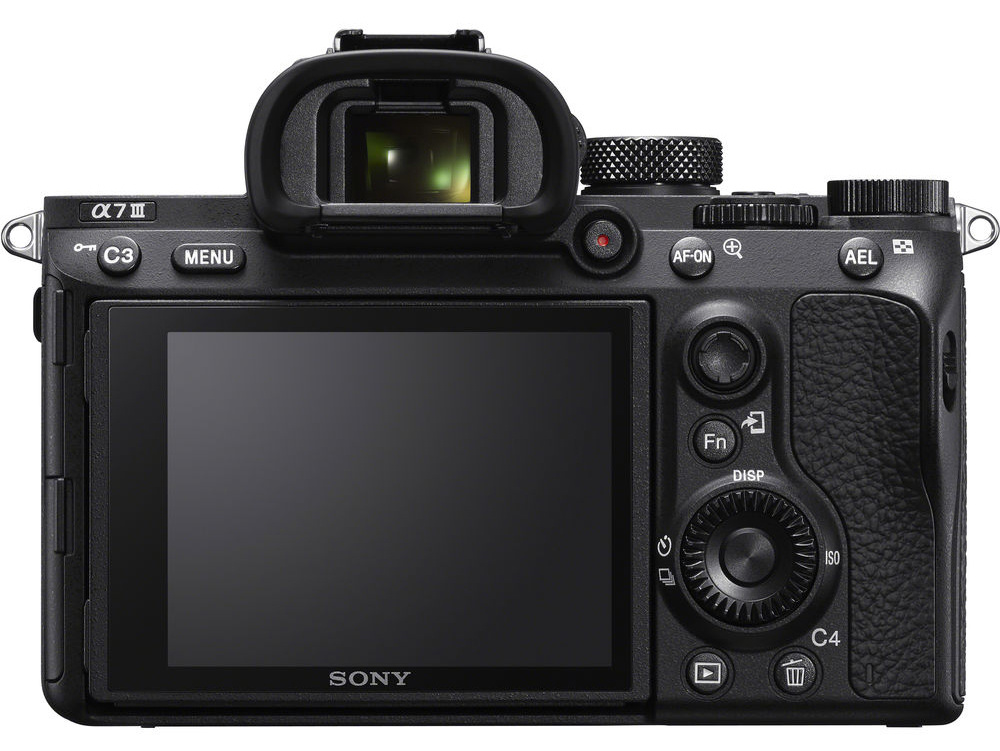
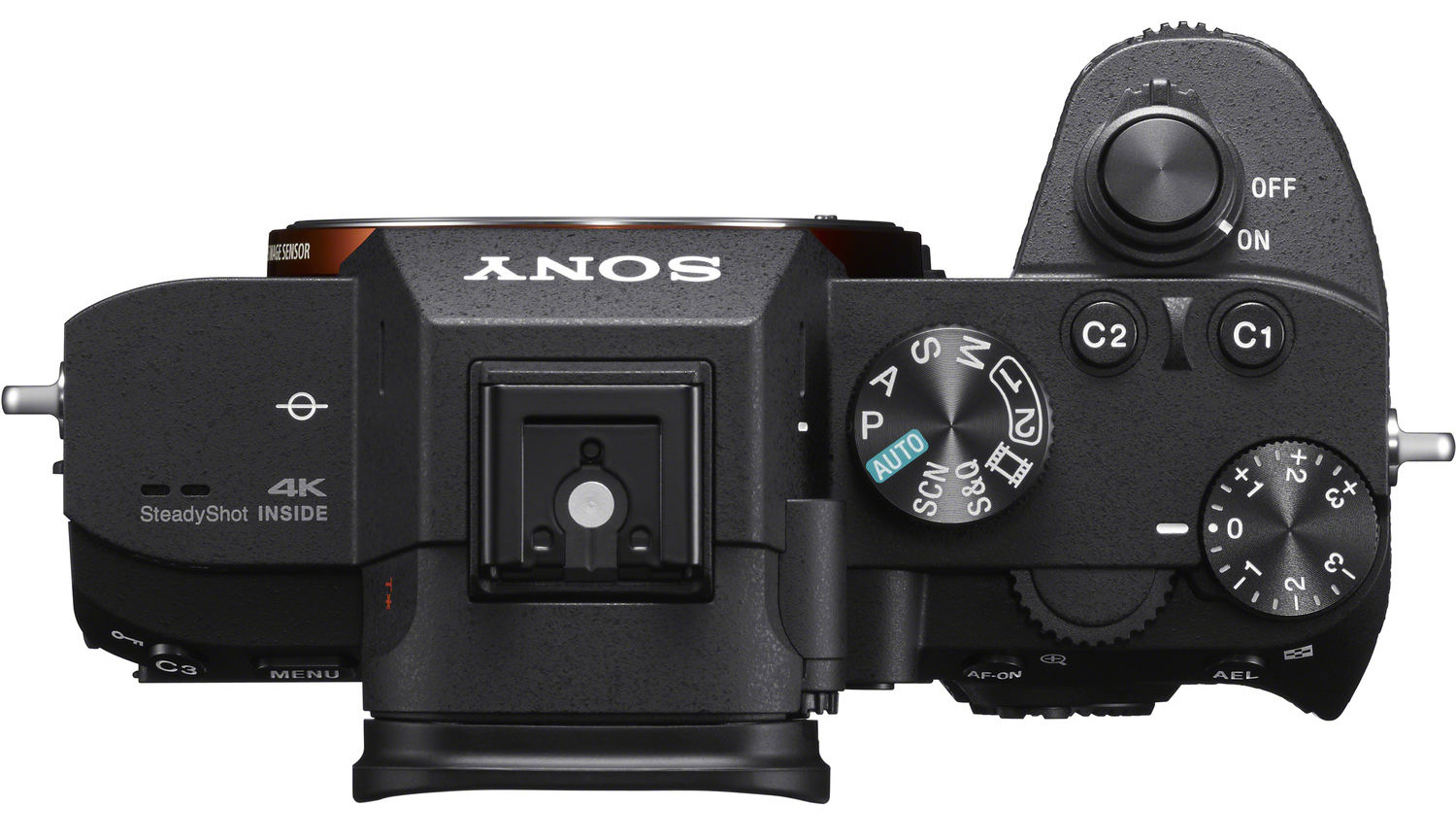
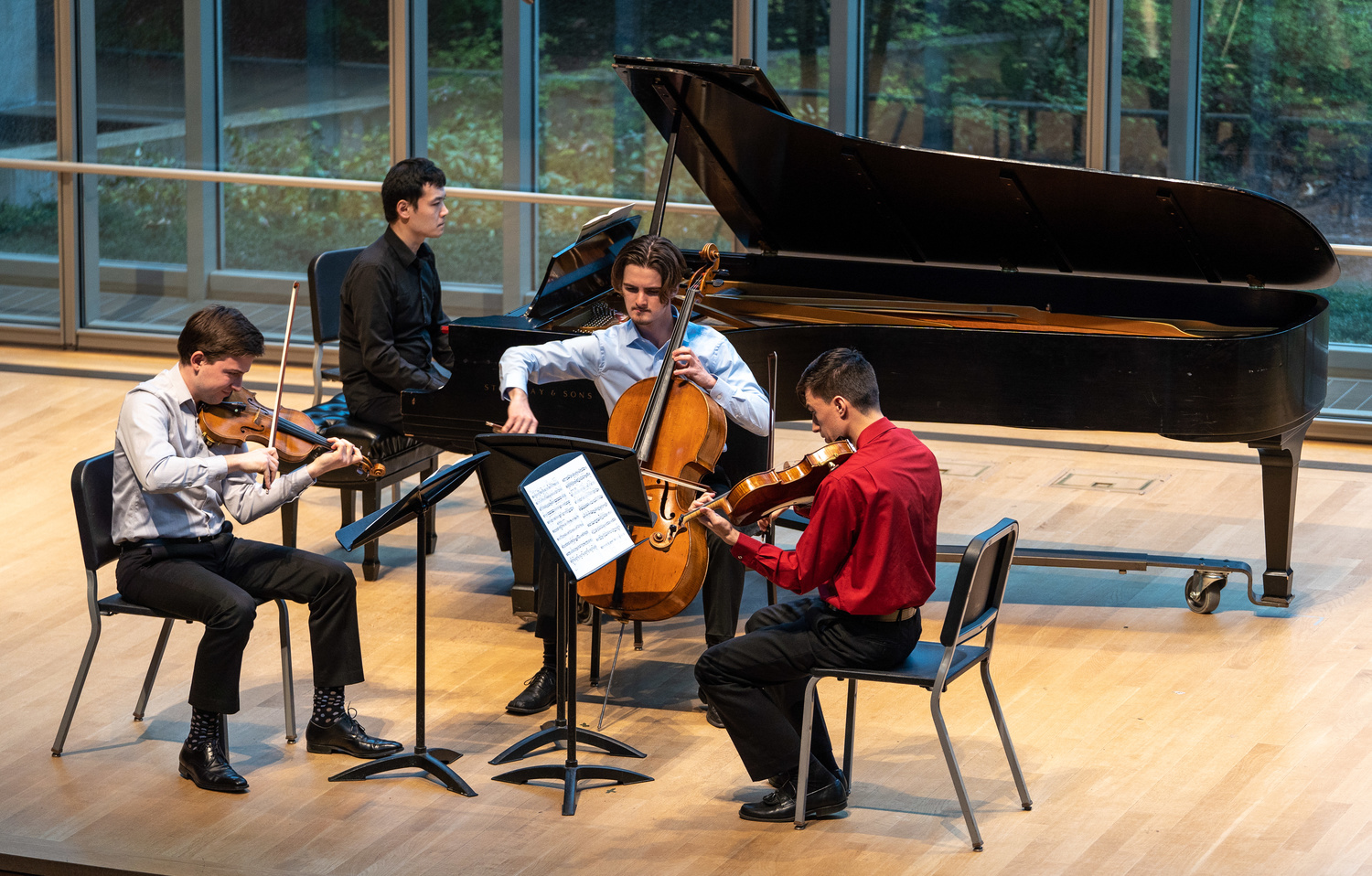


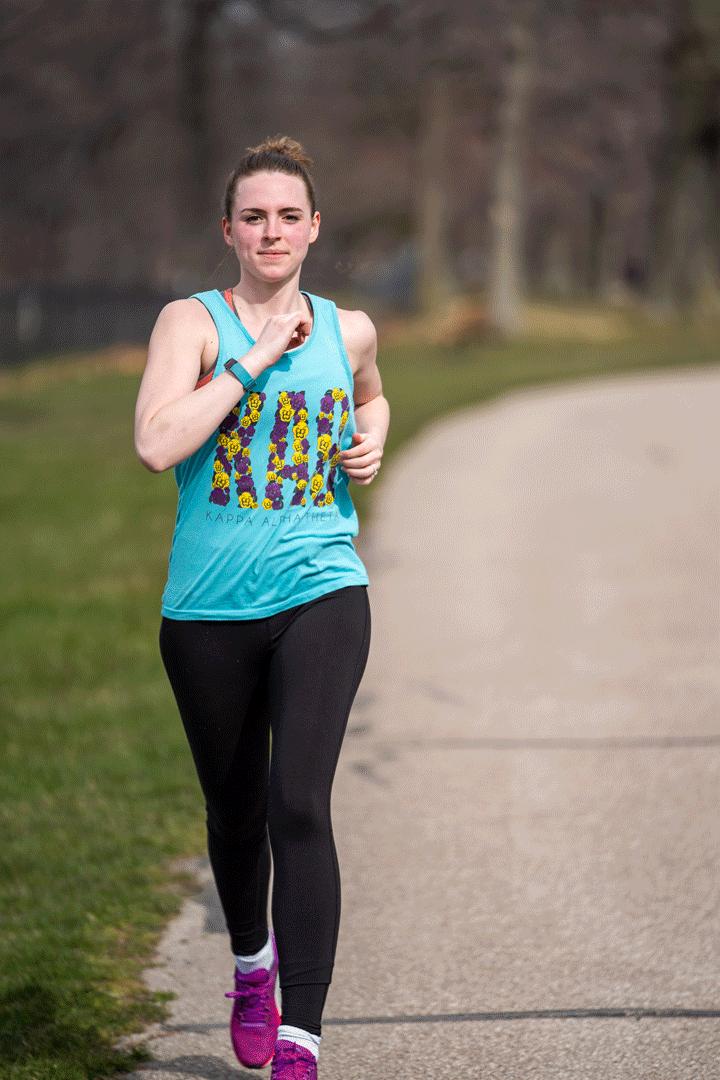
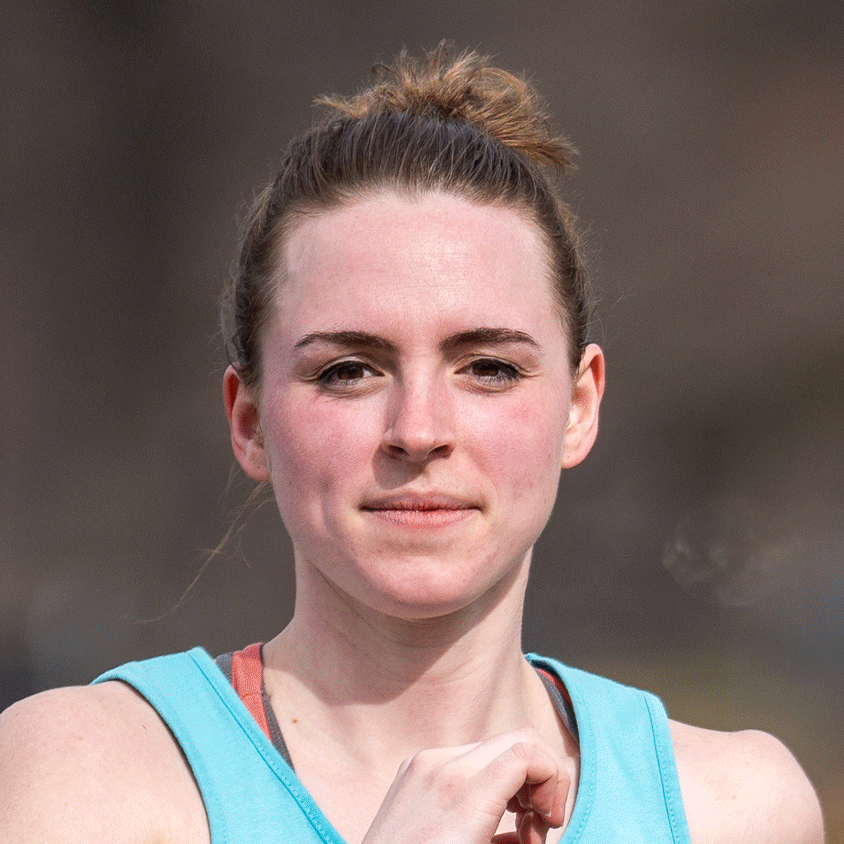














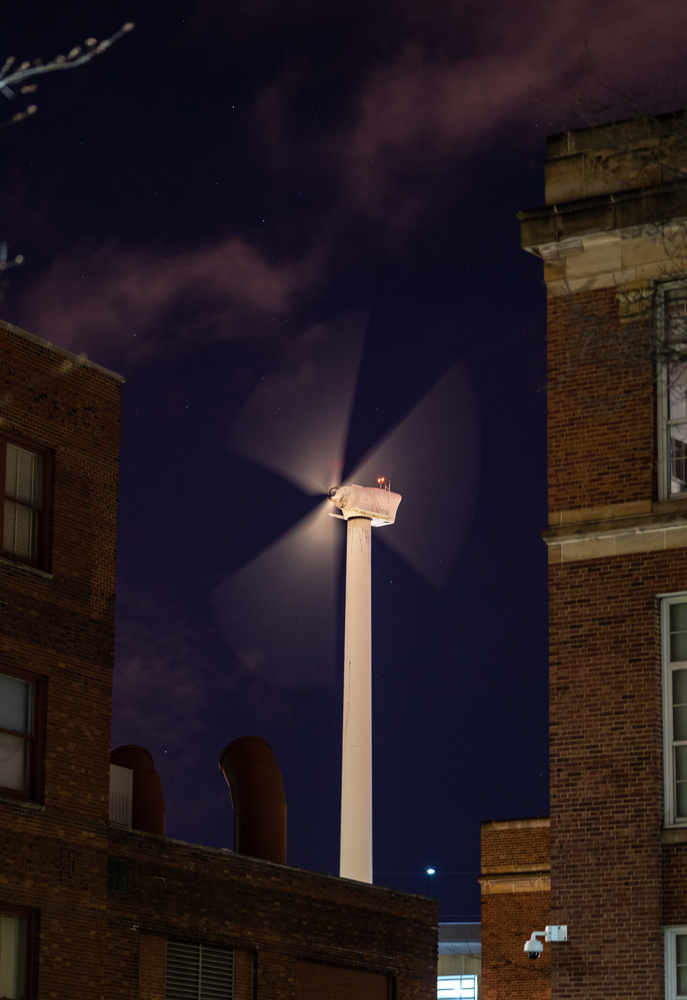

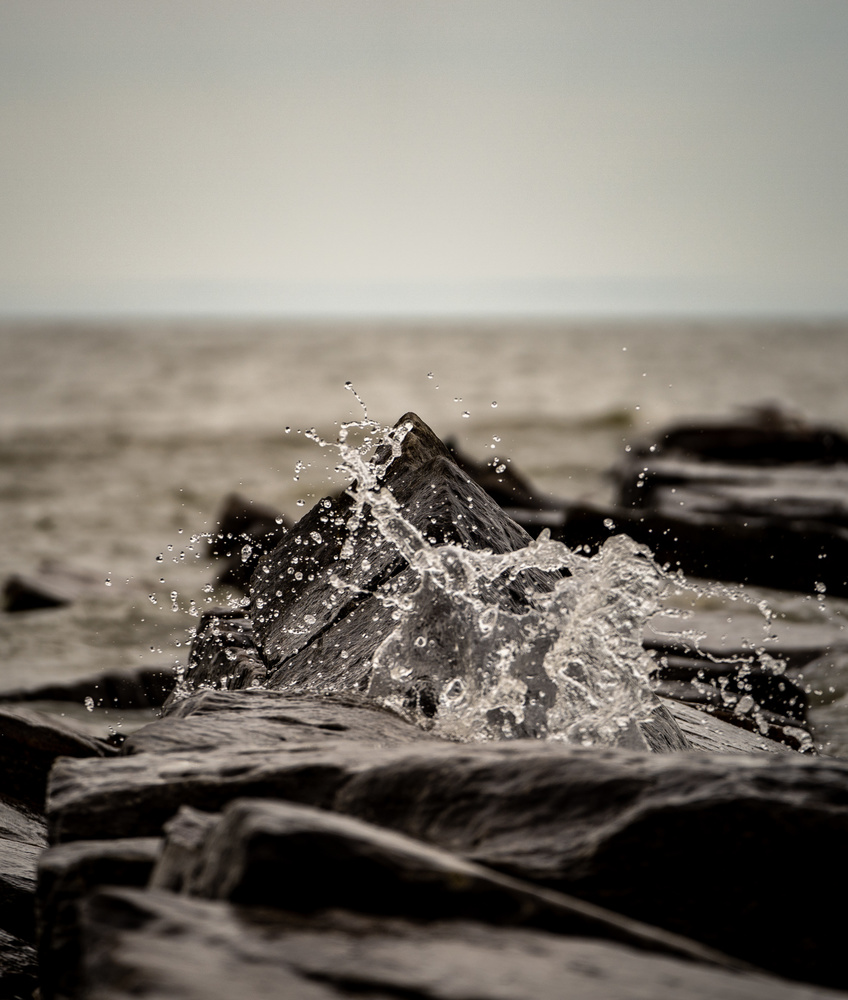






Anybody interested in donating one to a poor, overworked, underpaid teacher?? If you are, I'll send you my address.
By the way, water of 44 degrees in Europe is a tad too warm. But in the USA, you still use that archaic Imperial system. ;-)
Look, you may think powers of 10 are convenient, but I personally think 5,280 feet and 212 degrees are obviously the natural quantities.
Powers of 10 are necessary for those who count with their fingers and toes! :-D
And you can't imagine how handy that is. It only gets wrong if you accidentally cut a finger or toe off.
tldr: Where is my youtube video Alex??!!
You might want to put more thought into the title. :-/
I feature videos, you complain about me not writing originals. I write originals, you complain about how I write them. I can’t win with you, Sam. :)
p.s. I put exactly the right amount of thought into the title and I stand by it. Sony built a great camera at an excellent price and they deserve the accolades of the collective “you.”
I don't believe I've ever complained about you not writing originals. I've seen a lot of those complaints but I never do. I've complained about not thorough enough description of posted videos and I've complained A LOT about their content.
I don't remember complaining about how you write your originals, either. I do know I complain, and too much, but in your case it's always been a disagreement with your assertions. I think you're a very good writer...most of the time! ;-)
"Accolades"? Yes. "Want"? No.
How about, "The Camera You Should Respect"? ;-)
Sam is uninvited to all comment parties from now on Mr.UnhappyAboutEverything
Sam, why dont you use your ability to comment to discuss the topic at hand i.e. what do you think of the Sony A7 iii? instead of judging how the author has written the article. I'm sure you're inteligent enough to get past any quirks of journalism from one author to another.
I have no thoughts on that particular camera or any mirrorless camera. I do, however, understand your point. Believe it or not, I try to restrain my comments. My only defense is, I'm old and telling kids to get off my lawn gets boring after a while. ;-)
FStoppers is now just a bunch of original content. It's ridiculous. If I wanted well-written reviews of camera equipment and essays on the philosophy of photography, I'd go to Youtube.
:-)
FYI your link in "You can purchase yours here." takes me to Sony a7(R) iii..
He's in cahoots with Sony trying to upsell you
Hahahaha, Leigh. Thanks, chris Boltz! It’s fixed.
Does anyone here use the Sony ar7 II or III? I photograph Motor Homes and wonder if the a7 III would be enough?
Also what is the widest angle lens you can get in the Sony e-mount full frame? I looked on BH and there are plenty. I just wonder if anyone has some recommendations.
how many megapixels do your motorhomes require?! 50 ?! i'd say this camera is waaaay more than enough. It's much more about the glass you place in front of it than the body itself.
I think the widest is the voigtlander 10mm heliar. (Not that I'm a 'Sony shooter, I just check that system out time to time)
This one is shot with that lens:
https://fstoppers.com/photo/245620
I wouldn't recommend that lens for landscape or architecture work, as the corner sharpness is suboptimal, and there is always some vignette. I think the 12mm heliar is better (based on a few shots I did). I would recommend the 15mm but I guess there are wider than that coming from other manufacturers.
Natively they offer the 12-24 f4 that has been very highly praised.
I have the Voigtlander 10mm and it's a blast, but the situations in which you need that are almost nonexistent; it's more of a fun creative tool. I'd recommend an UWA zoom for the purpose you mentioned.
I saw someone mention that formatting a memory card took a full minute for them. Is that true?
I can scarcely believe that Sony would have a flaw like that.
Those people didn't buy a UHS-II card or are definitely using a memory card from the stone age. It takes about 8 seconds for mine to format a brand new Sony UHS-II card.
It never took more than 10 seconds for me.
i shoot nikon. this sony A7-3 makes me come up with excuses to not buy it. its that good. the bad thing is the lens line up and the build quality but the ISO performace is top's. im buying this for video work and low light work. size makes it stellar for street photography.
*deleted*
I really wish Sony and Blackmagic would get in bed together and create the best camera in the history of time.
If only it was easy to buy one
Good write up Alex! Agreed on the UHS-II being only one slot... it kills a bit the benefits if you use it it in 2 card backup mode.
Checking B&H several times a day for them to come back in stock.
Another clickbait article with the holy über alles SONY technology ?
Seriously, I don't want this SONY mirrorless camera, as none of its features are able to improve anything in my photo skills nor give an edge over my 4 years old technology camera.
So please, could we stop the really bad and lousy title ? Trying to convince people to get the latest toy from SONY, or NIKON, or CANON, or whatever, because the test use tremendous en superlative words to describe usual or at best so little improve features is just conterproductive.
Why counter productive ? many may jump bandwagons, and will have to brag everywhere how much better the tons of money spent into that MILC system make them better and excellent consumer, but never they will show you they improved anything into their photographic skills.
We only have too much money to spend into tech toys, asking for faster camera able to make 8k movies... but in the meantime, the photographic tool does only evolve so little.
Who here could clame he's able to see a difference between excellent pics taken with a d800 (2012) versus a A7r3 ?
What did the latest 6 years of photo sensor evolution bring us ? Aptina is the only one bringing dual gain, all other SONY revolutionary technology only brought us faster sensor.
But where is the better accutance ? do you realise we still have 36 or 42 millions one color photosites, Whatever bayesian pattern is now fast and reliably processed, we still struggle hard in monochrome red or blue situation because SONY and many other only work on speed instead of color and accutance.
But I guess nowadays influencers and pro photographers only like movie making camera, and give no more interest in real photo innovations.
You've got a lot of hate in your heart. You should find a place for it besides on here.
Funny, but there is a huge amount of mirrorless fanboys barking and claiming and praising the latest toy they get their hands on, and shouting loud all other system are lousy prehistoric and uncapable things.
Feel free to think I am full of hate, I still see lousy and poor storytelling praising 'innovations' that are far to deliver anything but tons of money for shareholders.
Why are they “fanboys” simply because they use eye-autofocus instead of using the joystick?
Last time I checked the photographer still does the work so if you’re fighting the “fanboys” and saying their poor storytelling is causing stress, maybe not ranting about “innovations” your system doesn’t offer would be on the list of “not to dos”.
What innovation has Nikon or Canon brought to the table in the past 5 years ?... I’ll wait
Eric, really it's about the glass. Cameras are for suckers. Cameras are just lightboxes. For sport, I prefer optical viewfinder and my Canon 5DS R and 5D III. On the other hand, I really like to shoot manual lenses and manual lenses only come back into their own with a mirrorless camera with single press focus magnification toggle (Sony peaking just doesn't work: compare with Fuji peaking which does work brilliantly, peaking will only take you so far in acutance though). Sony offers single button focus zoom if you set it up to go straight into 7x you can toggle back with a half press of the shutter button.
For this feature alone (plus reasonable skin tones which has been missing from all previous sony cameras), I do own an A7 III. Canon EOS R does not offer single press focus magnification toggle. It's the old A7 I/A6300 system of press, get a box, move the box, press again, then again to get out of focus magnification. Unusable.
If a photographer doesn't shoot manual focus glass, there's very little reason to switch from a D850/D800/D750 or 5DSR/5DIV. Price of glass for these mirrorless cameras is criminal. A step back to the dark ages of photography.
The glass is expensive because it’s having to focus at the speed that the new bodies are offering. If you don’t buy the glass to go with the fastest AF system on the market, you’re not using the body at its full potential. That’s not a hard concept to understand.
Manual focus works fine if you set up focus peaking correctly but I’m not shooting any sport in manual and don’t know of anyone attempting to do that.
Adapting glass works well too. I adapt a lot of Canon L glass and while we’re talking about glass, if you think Sony glass is overpriced just check out the shit Canon and Nikon releases this past year. Who the hell is buying a 0.95 lens for 7000 bucks ? I’m not that dumb!
Does using MC-11 adapter with Canon tilt-Shift lenses change the focal length?
Nope.
Great review Alex and accompanying? images/videos.I love the work people do with the sonys and similar cameras but for me it has too many bells and whistles. I still long for a camera that keeps the simplicity of manual film slrs without all the extras.For me my first digital slr the Pentax *istD came closest to that.The shots I got from that straight out of the camera jpegs were stunning.
Thank you, Geoff! Yes, cameras have certainly gotten pretty complex; I tend to set mine up so I never have to go into the menus and it remains a more tactile experience. That tends to make it the best experience for me.
The silent mode was a plus and since I was looking for a camera I thought this was going to be the camera. But the artifacts being produced on silent shooting was a bit disappointing and has me rethinking the Nikon despite its size.
It really was almost never an issue for me. Unless you're constantly using it for fast action, I don't think it would bother you.
Does Sony's IBIS work in conjunction with non-Sony lens that have IOS?
I know on my Metabones that the Canon IS works.
You can set focal length very easily with a single button press for full manual lense. MC-11 supports auto-IBIS settings.